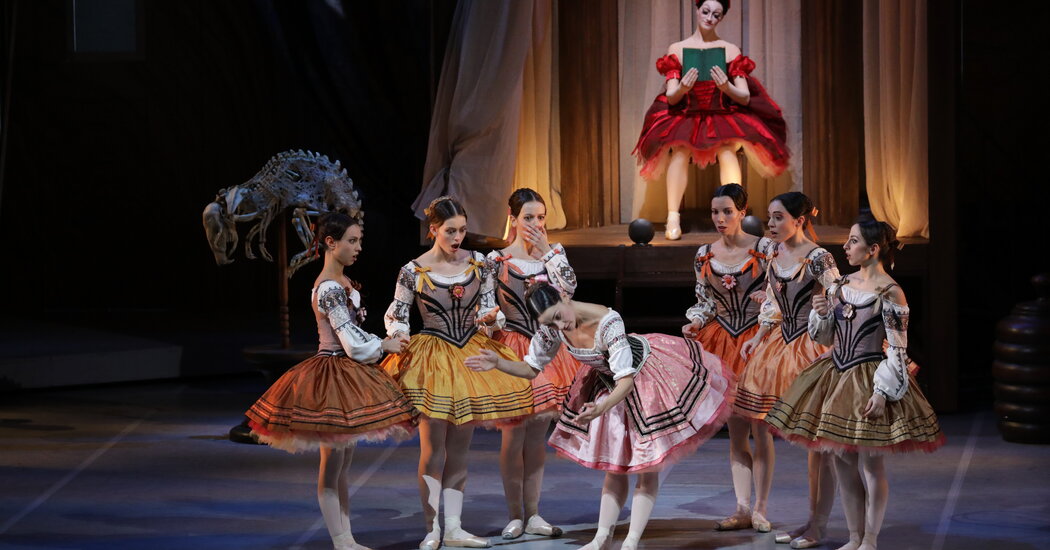Swanhilda is immediately established at the start of the ballet as a life-giving force — she enthusiastically flings open her curtains and waters her plants — but Franz is clearly a slightly dim, if adorable, klutz. Ratmansky gives him more dancing than is usual in traditional versions, and Andrijashenko, a polished technician with a beautiful expansive jump, does a fine and funny job of conveying both irrepressible exuberance and a poor-me-I-am-just-a-man sulkiness.
Ratmansky’s narrative proceeds with more clarity and logic than most “Coppelias” with Swanhilda, Franz and their friends integrated into the village dances and dramatic action. (The actor and writer Guillaume Gallienne is credited as dramaturg. Bravo.) Manni’s Swanhilda is under no illusions about her handsome swain, whom she clearly loves, and she makes it enjoyably obvious that he is in her very bad books. Supported in arabesque at the end of a pas de deux, she pushes him away and balances alone, before running off, leaving Franz stomping with frustration.
The villagers’s ensemble dances, notably a mazurka and a czardas, are earthy and convincing as folk dance, the women throwing themselves sideways into the mens’s arms, hands tucked behind heads, the group performing vigorous stamping jumps without undue prettiness.
Dr. Coppelius (Christian Fagetti) is not the doddering fool of many versions, but bad-tempered and obsessively focused on his mechanical creations. In Act 2, Kaplan makes the interior of his house an atmospheric mad-scientist lair. Huge drawings of skeletons are suspended from high ceilings; disjointed, near-naked dolls line the sides. When the women set them in motion, the dolls move with jerky, convincing limitation. And a special word here for Ludovica di Pasquale as Coppelia, for whom Ratmansky has invented a brilliant, staccato mime sequence that goes far beyond the usual perfunctory puppet-like gestures.
In this act and elsewhere, Ratmansky uses mime and gesture, but more often integrates it into the dance, so that the steps themselves seem to tell the story. Sometimes, as when Coppelius laughs with glee as Coppelia (Manni brilliant as the disguised Swanhilda) seems to come to life, the movement seems a pure embodiment of the music.
